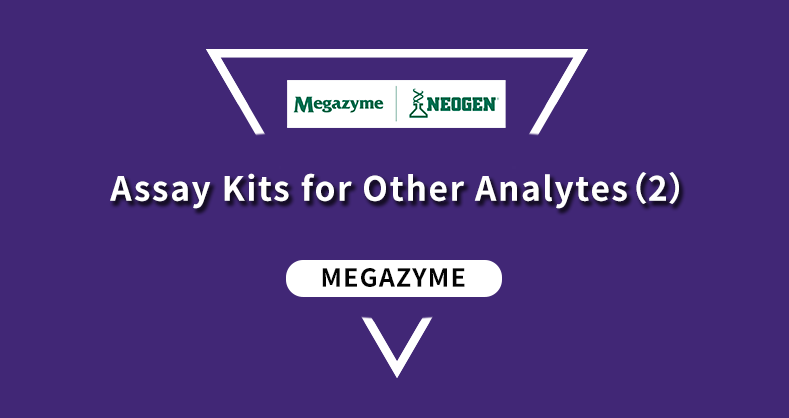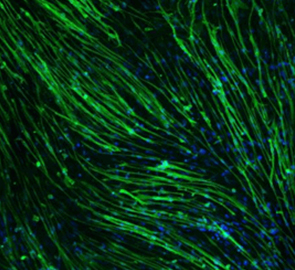【Megazyme】Assay Kits for Other Analytes(1)
List of Assay Kits
Analyte |
Product Code |
Acetaldehyde |
K - ACHYD |
Ethanol |
K - ETOH, K - ETOHLQR |
Glycerol |
K - GCROL, K - GCROLGK |
Guide to Symbols
The following icons, symbols and graphics are used in this catalogue.
‘When to test’ graphic
Each analyte guide includes a graphic showing when that analyte is most commonly tested during the vinification process. The steps in the vinification process that are considered are as follows (also used on our wine infographic on page 5):

Every winery and wine will have its own unique testing requirements. However we have aimed to indicate the typical stages during winemaking when measurement of an analyte is likely to provide useful results that will direct further action. If we recommend testing at a specific step, it is displayed in a dark red colour and labelled as follows:

Icons for product features
The data listing for each Megazyme product is shown with a sidebar that summarises the product features. The following symbols are used where appropriate:
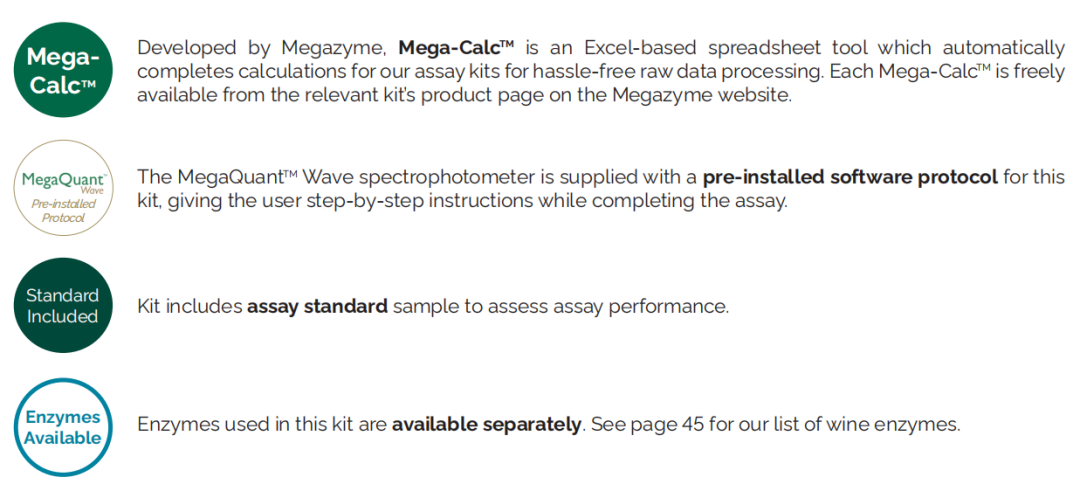
Acetaldehyde
Acetaldehyde (sometimes called ethanal) is a sensory compound that adds flavour and complexity, but spoils wine at high concentrations.
Where does it come from?
Acetaldehyde can form at two different points in the vinification process. During yeast fermentation, by-products of ethanol formation are converted to acetaldehyde by the same micro-organisms responsible for producing acetic acid. Much of this acetaldehyde degrades during malolactic fermentation. However, during the maturation stage, ethanol in the wine may be oxidised to acetaldehyde by the enzyme alcohol dehydrogenase.
What does acetaldehyde mean for my wine?
At low levels (< 30 mg/L for red wine and < 80 mg/L for white wine), acetaldehyde imparts a pleasant “fruity” aroma to wine. Above this threshold, acetaldehyde can result in a metallic, “grassy”, sherry-like odour
What can I do with the acetaldehyde result?
High levels of acetaldehyde can be corrected by addition of sulphur dioxide (SO2 ). Sulphur dioxide and acetaldehyde bind together to form a compound called hydroxy-sulphonate, which does not influence the flavour and aroma of the wine.

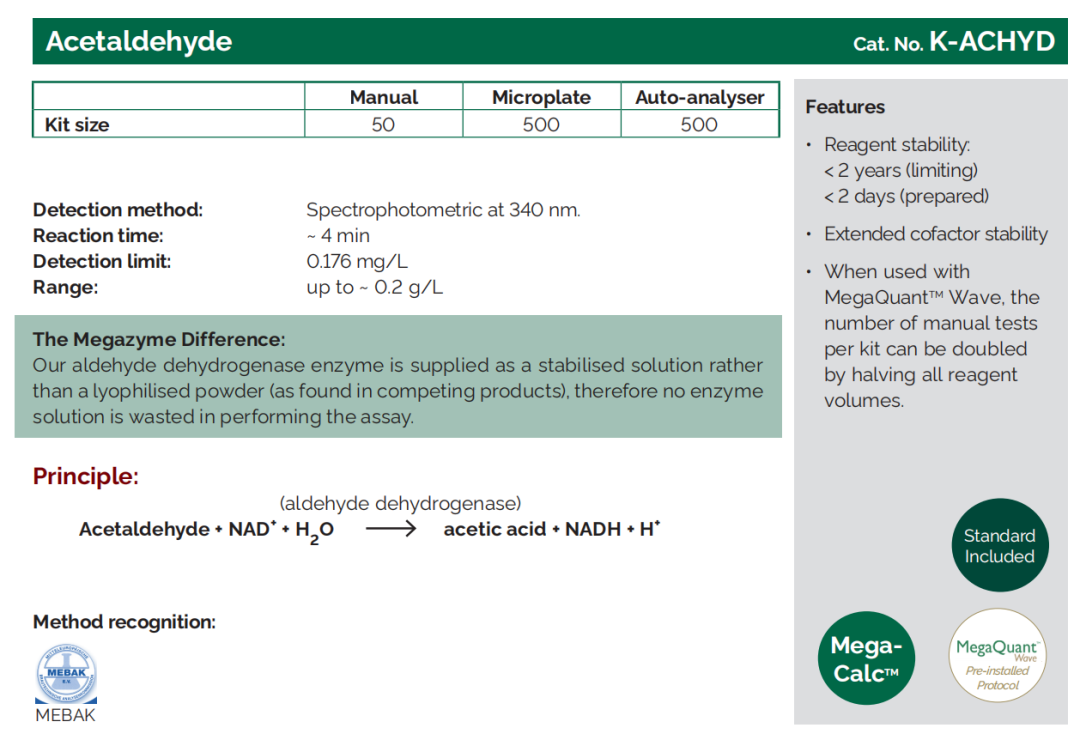
Ethanol
Produced naturally during fermentation, a wine’s alcohol content must be reported on the label in all major markets (see table).
Where does it come from?
Sugars build up naturally in the grape as it ripens, and are converted into ethanol (alcohol) by yeast during fermentation.
What does alcohol mean for my wine?
A wine with a higher alcohol level will have a more fullbodied texture. As most yeast species are unable to survive once alcohol concentration reaches 18%, this is typically the natural ceiling for alcohol content unless a wine is fortified.
What can I do with the alcohol result?
Alcohol content must be stated on the bottle. However, winemakers may also wish to test alcohol levels during the production process to look for variation between harvests and to guide decisions in the fermentation process.
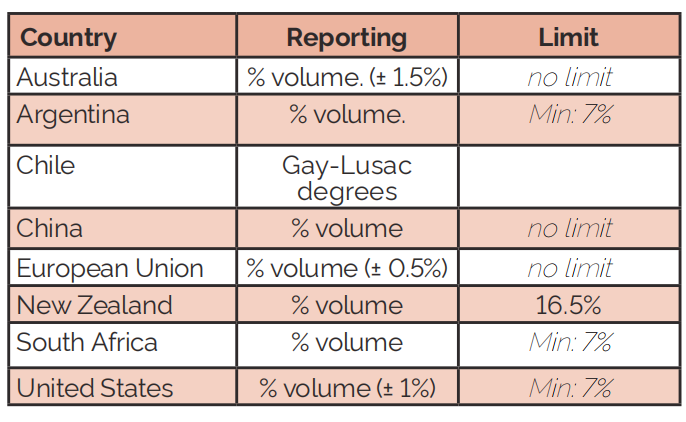



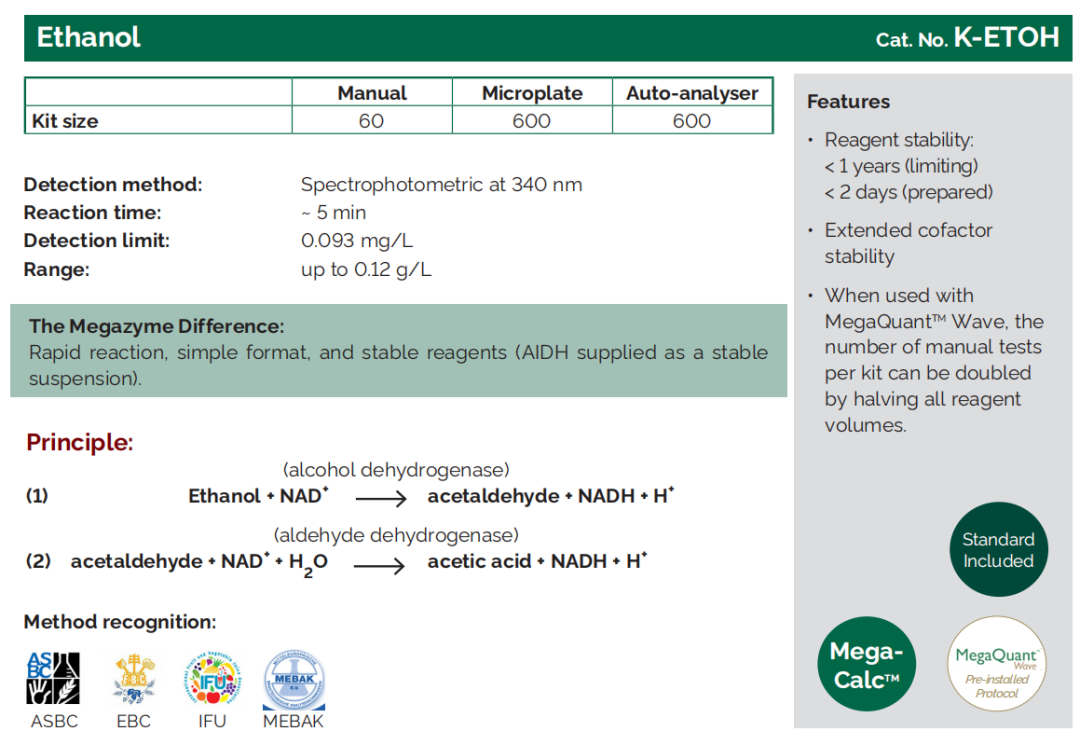
Glycerol
As a product of fermentation, glycerol occurs at concentrations of approx. 1% (v/v) and is an indicator of quality.
Where does it come from?
During yeast fermentation of sugars, glycerol is produced alongside ethanol and carbon dioxide. Botrytis fungus, if present, is also metabolised into glycerol during vinification.
What does glycerol mean for my wine?
Glycerol confers a sweeter flavour to wine. At concentrations above 26 g/L, it is associated with a more full-bodied mouthfeel. Some winemakers use overall glycerol as an indicator of the all-round quality of a wine.
What can I do with the glycerol result?
Winemakers seeking to add body to their wine can experiment with the use of different yeast strains during fermentation, measuring glycerol in order to quantify the impact of changes made.




点在看,传递你的品味





